It’s funny how things change. Five years ago I wouldn’t have given second thought to producing print material with digital printing. No, only offset printing. The thought of a brochure, annual report or catalog printed as if it had come out of Kinko’s — excuse me, FedEx Office — was just unbearable and even the much-hyped and pushed feature of individual customization — Dear Jon, from Chicago, IL 60660… — didn’t seem to be much draw. And seeing samples of digital printing where a block of color looked as if it had been filled in with streaky watercolors and colored type looked as coarse as the graphics in an Atari 2600 game didn’t help either. Needless to say, digital printing technology has improved vastly and so has the quality of the finished product, which, like offset printing, has a range of quirks that have to be tested as you go to be improved. Over the years, printers and paper manufacturers have produced elaborate promotional materials that show you how to make the best of offset printing by showcasing examples of 1-, 2-, 4-, and 6-color printing, varnishes, skin tones, gradients, metallics, and subjecting papers to all sorts of other processes equivalent to being crash test dummies. More or less, the art of offset printing has been properly documented and even mastered. Now it’s digital printing’s turn.
Well, sort of. This past July, fourteen students attended a two-day workshop at Germany’s Hochschule Darmstadt University of Applied Sciences with Prof. Frank Philippin and London-based designer James Goggin. The brief, as explained by Goggin:
My plan for the workshop is to investigate the visible and tangible parameters of graphic design — type specimens, halftone screens and, in particular, colour tests and calibration charts — and make a book of our own self-produced tests which we will send to print on Friday afternoon using the online print-on-demand system Lulu. The book project will therefore act as a colour/type/pattern test of the very system with which it is produced. “Print-on-demand” is an increasingly important production system which can serve to make us designers rethink the impact our profession has on the environment and to question the often wasteful print volumes and production methods requested of us by our clients. Graphic designers, and especially students, have a chance to use and subvert these relatively new (and fairly cheap) technological systems to our advantage.
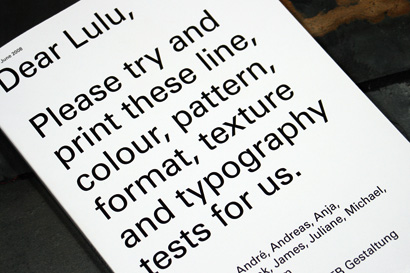
The result of the workshop is Dear Lulu, a fantastic and imaginative resource that puts digital printing to the test through a Do-It-Yourself presentation that fits right in with philosophy of print on demand that makes it such an alluring proposition for designers looking to publish with little financial risk and with pretty decent results in return.
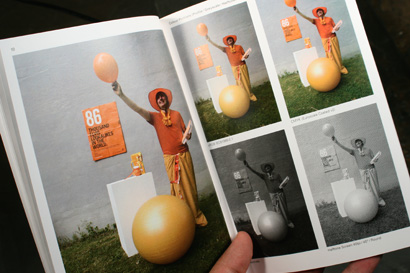
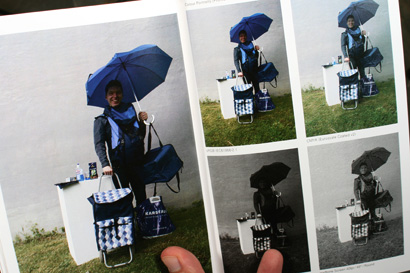
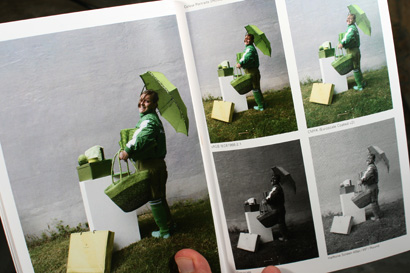
The first section of the book testing color portraits, shows the students, each dressed in a different color, posing outside in still life photographs featuring other random items in the same hue. The photos are then reproduced as CMYK, RGB, Grayscale and Half-tone so that you can see which color model is better — pretty amazing that RGB prints so well, and pretty amazing to think that sending an RGB to offset printing could cost a designer his or her job or thousands of dollars to reprint the washed out photo.
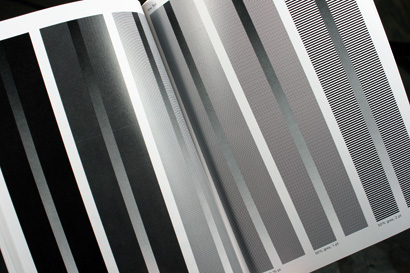
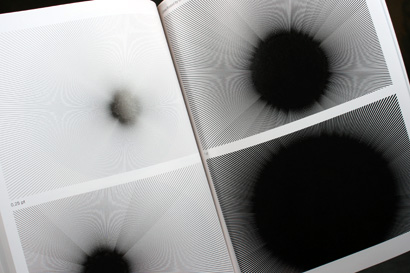
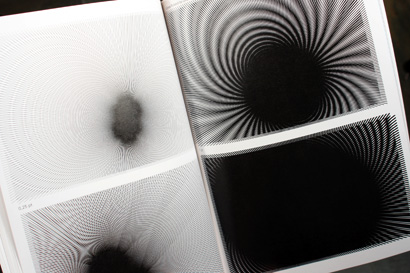
Line and pattern tests are interesting, just to see how far you can go with thick and thin lines and how crazy you can get with radiating patterns.
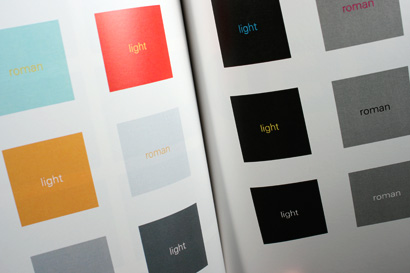
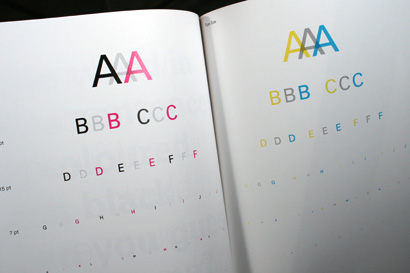
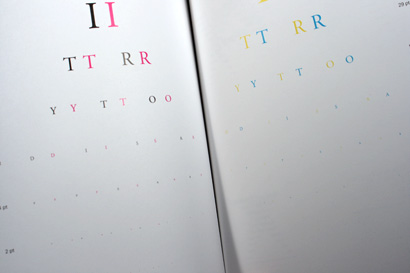
The typography tests are very helpful, as I think it’s always been the weakest point of digital printing. Black type always looks good, as it just requires drawing ink from the black “cartridge” of a printer much like offset printing, but whenever color type enters the equation, things get messy quickly, but as is clear in the book, as long as you do color type on a white background it will look pretty good. A surprising thing from this book was to see how well small type (around 4pt) in black holds up, and also when reversed.
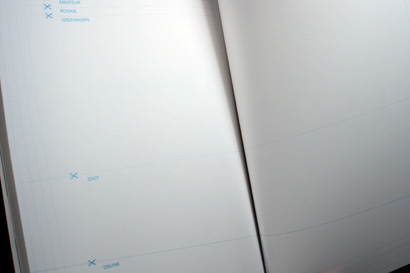
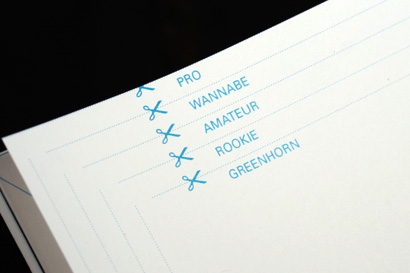
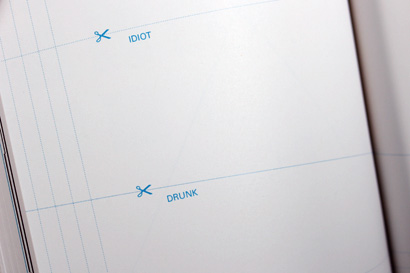
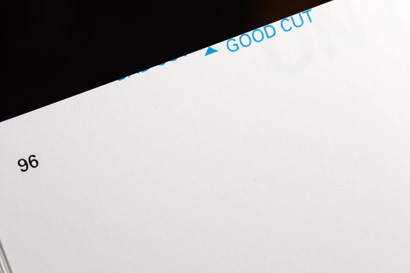
One of the most interesting sections of the book is in the end, where the students test the finishing capabilities by seeing how close to the edge you can get, and drawing guidelines to see how straight the trimming is. My copy on page 96 demonstrates how things are not perfect: At top edge of the page there is text that says “Good Cut” and to its left I can see the very bottom of text, positioned outside of the document’s margins that says “Bad Cut.” Funny.
Dear Lulu is a great tool to test digital printing. You can do it for Lulu, of course, by purchasing the book but you can also do it for your own printer by downloading a free PDF. The book lacks the sophistication of your typical paper or printer promotion but, as I mentioned, things change. Graphic design is no longer solely about the most beautiful photograph or the most expensive paper in the most refined layout: It’s about effectively producing messages and experiences that can be easily distributed.






very very smart.
On Aug.20.2008 at 11:46 AM